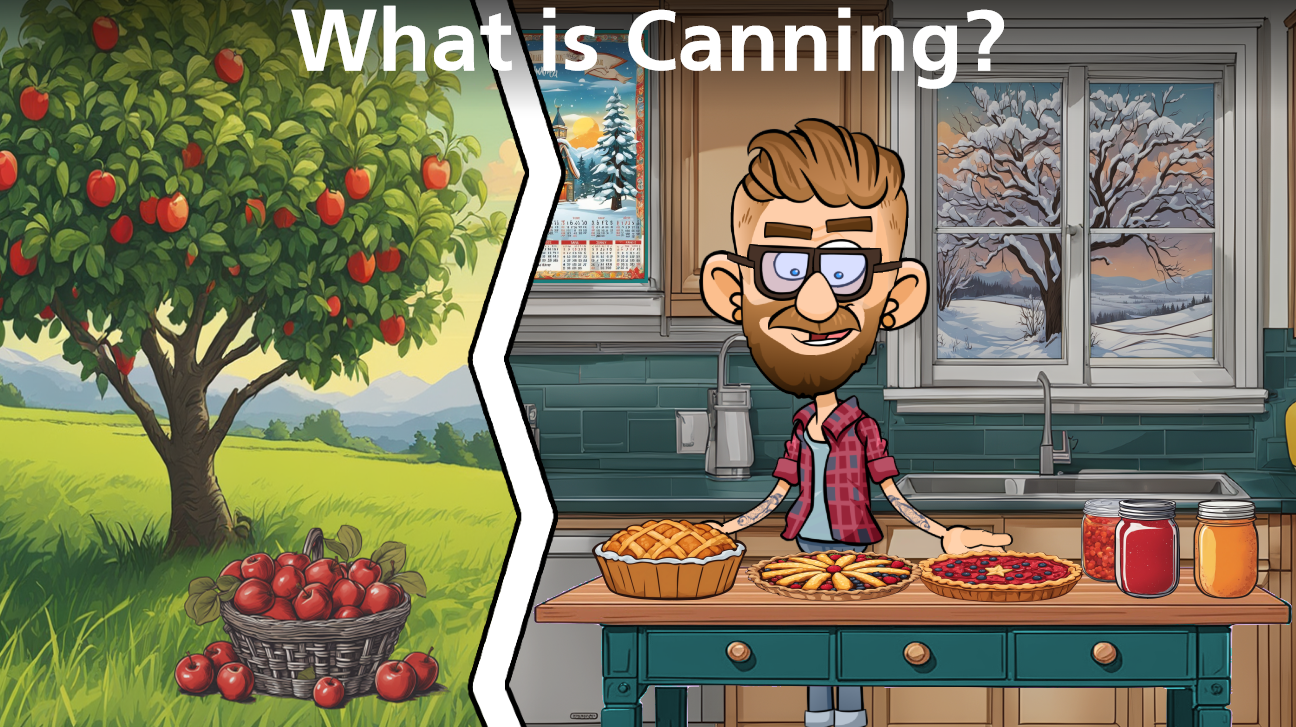
This was a digital approach to extend the reach of home food preservation education to unreached learners not only across the State, but also across the nation.
- Responsibilities: Instructional Design, eLearning Development, Supplemental Content Development, Multimedia Design and Development using a combination of traditional and generative AI techniques
- Target Audience: All ages, teens through seniors
- Tools Used: Articulate Storyline, Krita, Reallusion Cartoon Animator, Generative AI
- Budget: Low
- Client: Purdue University Extension Services
- Year: 2025 (in progress)
Overview
As purveyors of research-based knowledge, one responsibility of Purdue Extension is to exhibit a digital presence amongst internet information sources, reducing the misunderstandings and misuse of inappropriate food preservation methods while supplying access to approved and tested approaches to safe home canning.
A digital offering of this sort provides easy access to reputable knowledge, reducing or eliminating reliance on and influence by less qualified and questionable internet sources.
This project serves a wide audience, spanning from teens learning about food preservation methods to older adults who regularly engage in home canning and preservation practices as a daily part of their overall nutritional and financial practices. In keeping with other extension projects striving to reach a wide audience with varied educational and experiential backgrounds, this module utilizes a low text, high graphic format that helps to engage learners in potentially technical topics by immersing them into familiar environments with relatable characters guiding the way.
The client agreed with my approach, feeling the learners for this topic would be better served by limiting the cognitive load and maximizing the engaging atmosphere of a potentially dry and procedurally heavy topic.
Project Origins
{Optional summary of how the project came to be and what influenced design decisions or tools}
Design Approach
{Optional summary of the justifications for the basis of the design. May include problems identified, theories used, project specific definitions, and sample integrated content – a few lines to several paragraphs}
Process
This project targeted a broad audience and addressed a very specific and hands-on topic. Extension workshops are typically in-person and demonstration oriented, using materials and supplies relevant to the discussion. As a result, translating such content to asynchronous digital environments requires significantly more than the mere transcription of scripts and objective lists.
Instructional Design
This module was part of a larger overall food preservation project. For the Boiling Water Bath Canning component, I worked with the client’s contnet materials, identifying key themes and topics suitable for online representation and content coverage.
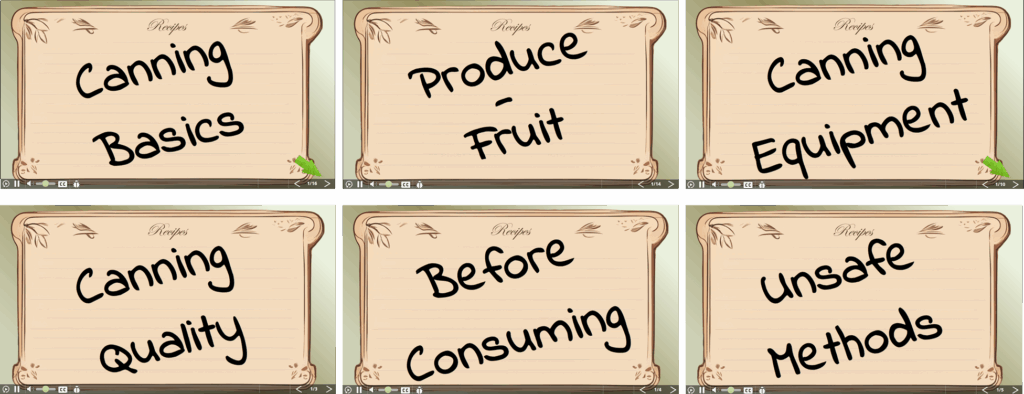
With client approval, each of these topic areas served as the theme for submodules. Special consideration was given to how each topic area could be represented to learners in a relatable and engageming manner, despite the asynchronous nature of the learnnig.
Text-Based Storyboard
Due to the specialized technical nature of the curricular content, I decided to develop a visual storyboard , based on the client’s content documents, to represent the submodule topics. Normally, I would develop and work from a text narrative, but in this case I needed to ensure that the required content could be adequately visualized by learners. The storyboard was still curricularly driven, but the viability of accurate and consistent visuals guided the way here.
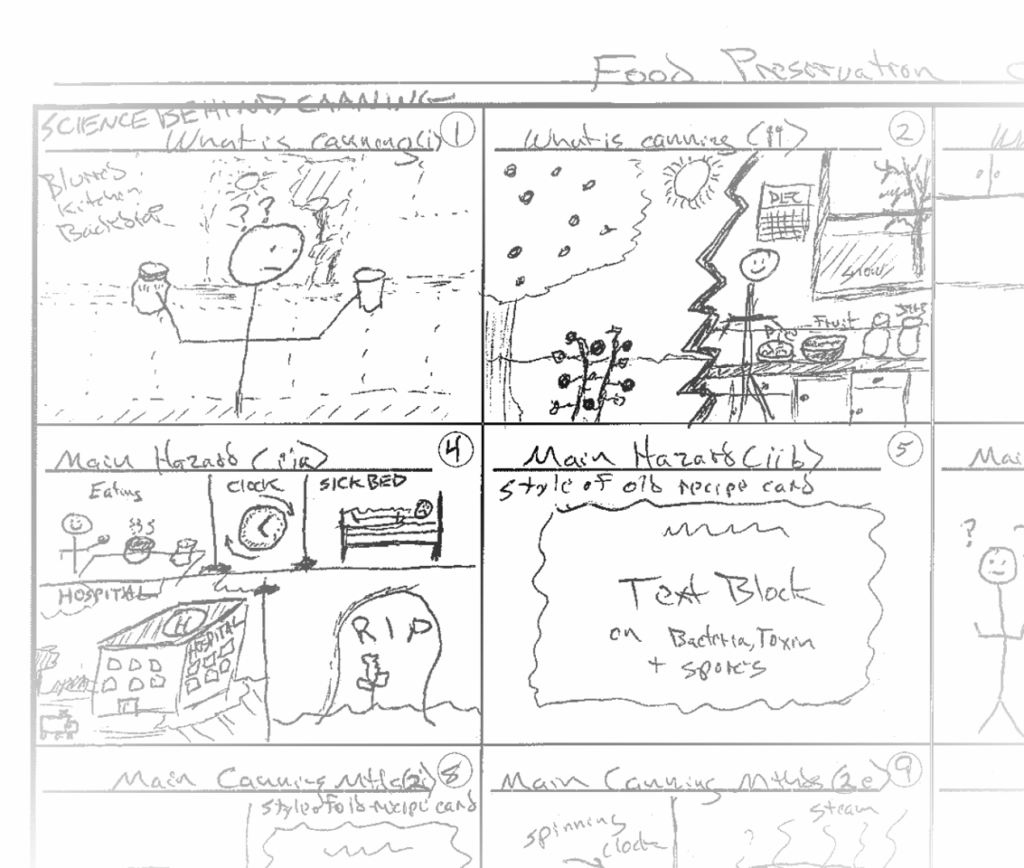
Prototype
After client approval of the media prototype, work will progress to narrative scripting to support topical content, fleshing out module slides with appropriate textual scaffolding, addition of interactives, and assessments.
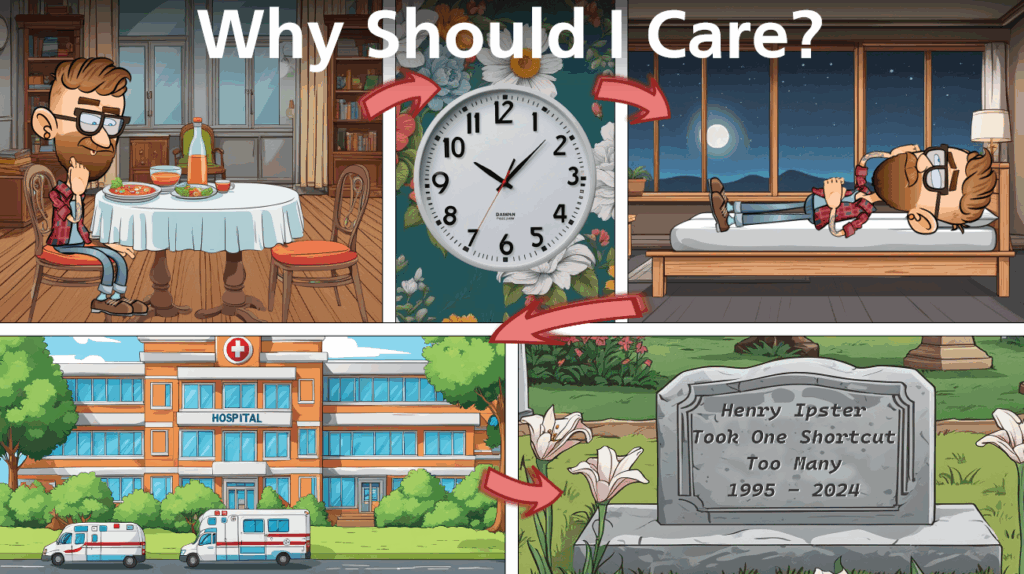
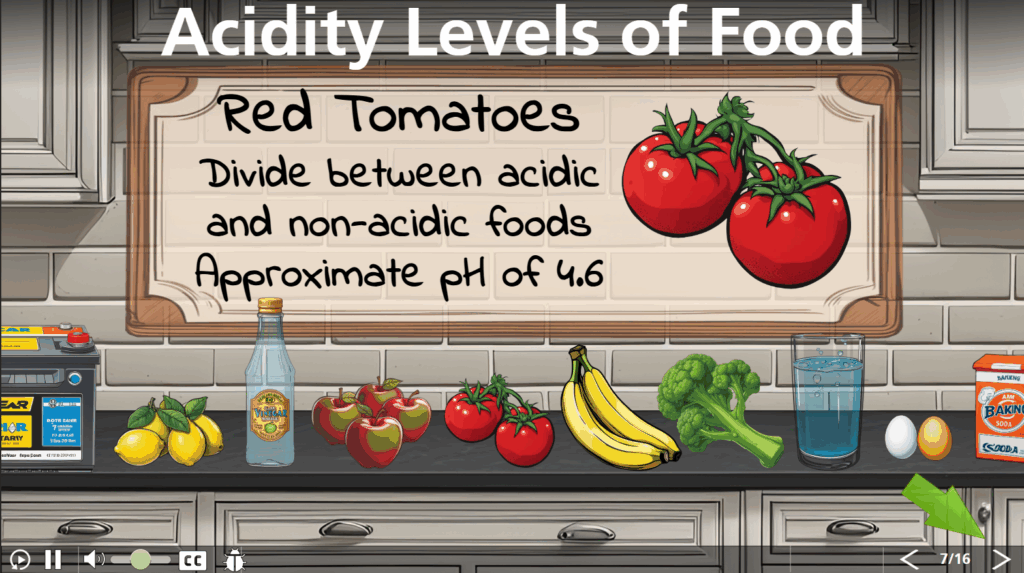
Some custom JavaScript provided additional interactive functionality, such as active image coparisons between process success and failure states. Additional interactives are under development.
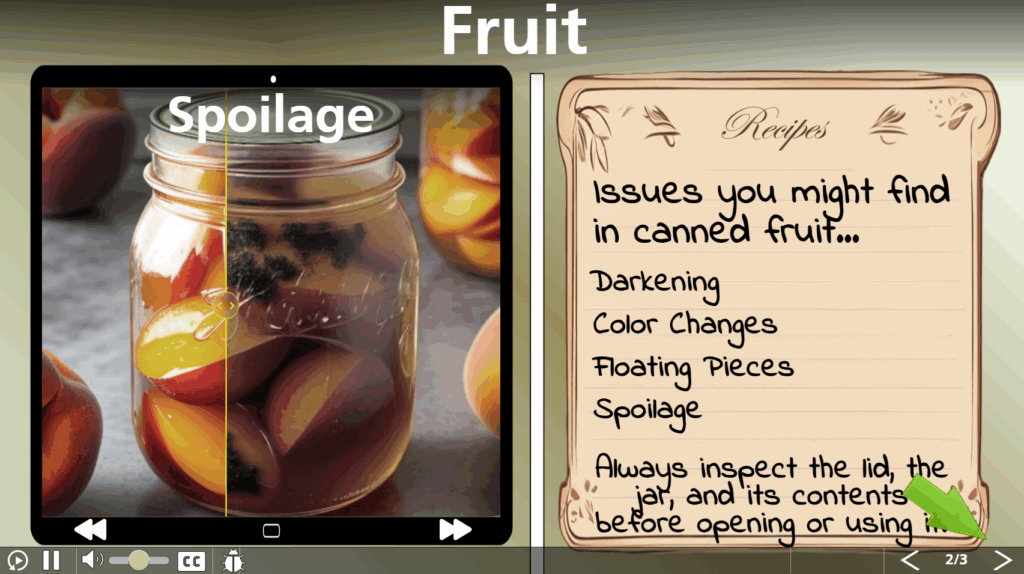
Final Product
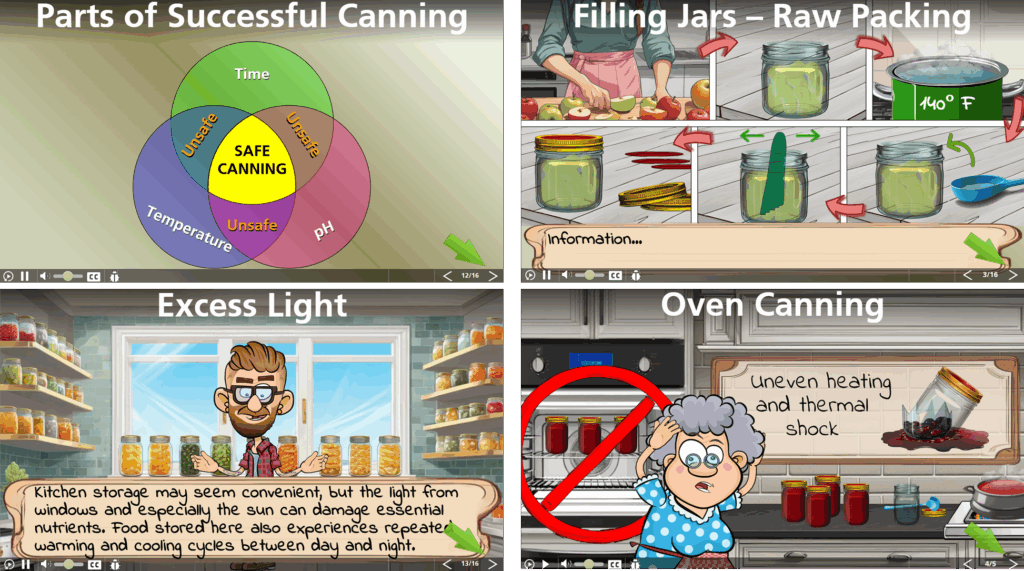
As a final product, this module will include additional interactive elements, formative and summative assesments, as well as some form of process simulation (currently under development).
Client Testimonial
{Optional paragraph summarizing client feedback or comments on final product}
Results and Takeaways
{One line describing implementation of the project}
{Perceived value and expected outcomes – 1 to 2 lines}
{Takeaway and impact on future work – 1 to 2 lines}